WORLDWIDE: HEADLINES
DBS To Buy Citi’s Taiwan Retail Unit For $707 Mln As It Chases Growth
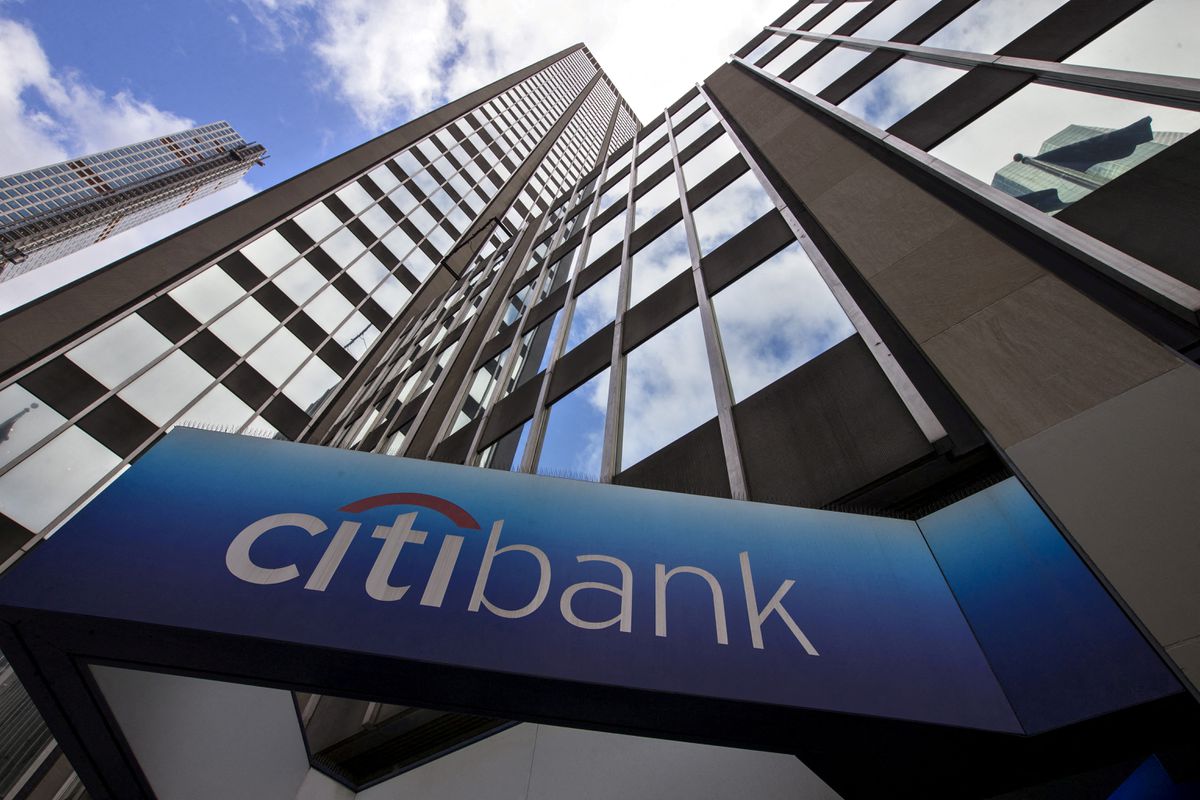
DBS Group (DBSM.SI) has agreed to pay S$956 million ($706.6 million) to buy Citigroup’s (C.N) consumer business in Taiwan, making the Singapore lender the largest foreign bank in Taiwan by assets as it bulks up regional acquisitions to power growth.
The deal is part of DBS Chief Executive Piyush Gupta’s strategy of expanding Southeast Asia’s largest bank in overseas markets, having bought an $814 million minority stake in a privately owned Chinese bank last year as well as distressed lender Lakshmi Vilas Bank in India.
“The acquisitions we have made since the start of the pandemic have given us a platform to build meaningful scale in some of our core markets. This acquisition is no exception,” Gupta said in a statement on Friday.
The transaction comes after Citi announced last year that it would exit retail operations in 10 markets in Asia as it refocuses on its more lucrative institutional and wealth management businesses.
DBS, which makes the majority of its profit from Singapore, said it will take on about 3,500 staff from Citi’s Taiwanese business which has 2.7 million credit cards, 500,000 deposit and wealth customers and 45 branches.
Gupta said Citi’s Taiwan consumer business was a “highly attractive, high-returns business” that DBS expects to contribute at least S$250 million annually in net profit after COVID-19 recovery.
DBS said it will pay cash for the net assets of Citi’s consumer business in Taiwan plus a premium of S$956 million, that will be adjusted when the deal is expected to close in mid-2023. DBS will also inject S$1.2 billion as capital.
Citi’s Taiwan business included gross loans of S$11.3 billion and total deposits of S$15.1 billion, DBS said
DBS said the acquisition, funded by its excess capital, will have no impact on its ability to pay dividends.
Full coverage: REUTERS
Fiscal Stimulus Powers U.S. Economy In 2021 To Its Best Performance Since 1984
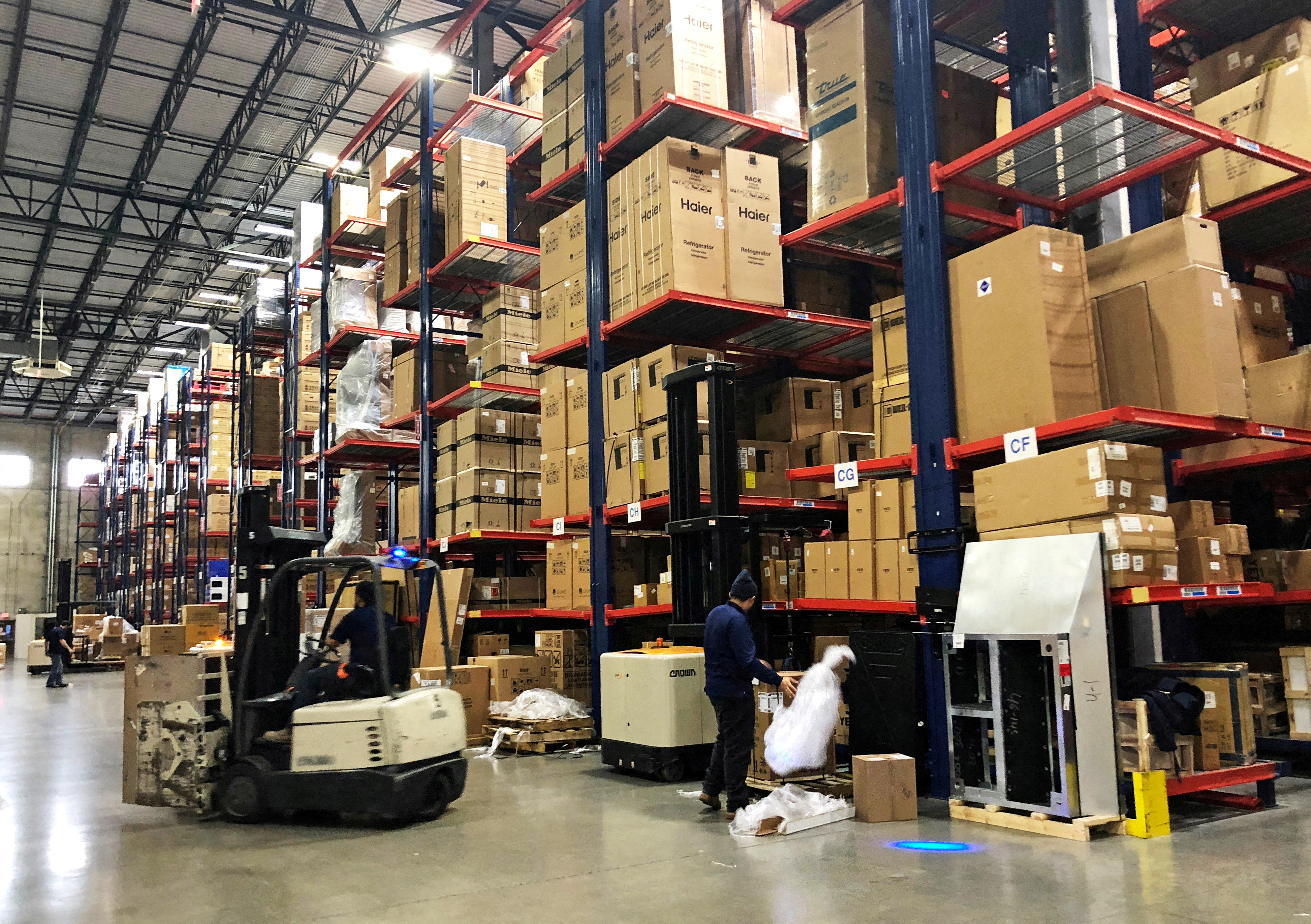
The U.S. economy notched its strongest growth in nearly four decades in 2021 after the government pumped trillions of dollars in COVID-19 relief, and is seen forging ahead despite headwinds from the pandemic, strained supply chains as well as inflation.
A surge in gross domestic product in the fourth quarter as businesses replenished depleted inventories to meet strong demand for goods was the final push. Last year’s robust growth reported by the Commerce Department on Thursday supports the Federal Reserve’s pivot towards raising interest rates in March.
Fed Chair Jerome Powell told reporters on Wednesday after a two-day policy meeting that “the economy no longer needs sustained high levels of monetary policy support,” and that “it will soon be appropriate to raise” rates.
“While Omicron will lead to weaker growth in the first quarter, activity is expected to rebound nicely once the latest pandemic wave abates and supply-chain glitches ease,” said Sal Guatieri, a senior economist at BMO Capital Markets in Toronto.
“The Fed will need to be ‘humble and nimble’ as it navigates underlying economic strength, worsening labor shortages, and stubbornly high inflation.”
The economy grew 5.7% in 2021, the strongest since 1984, as the government provided nearly $6 trillion in pandemic relief. It contracted 3.4% in 2020, the biggest drop in 74 years.
Gross domestic product increased at a 6.9% annualized rate in the fourth quarter, the government said in its advance GDP estimate. That followed a 2.3% growth pace in the third quarter.
Growth is 3.1% above its pre-pandemic level.
Full coverage: REUTERS
WORLDWIDE: FINANCE/MARKETS
Asian Stocks, U.S. Futures Regain Footing After Fed Rate Shock
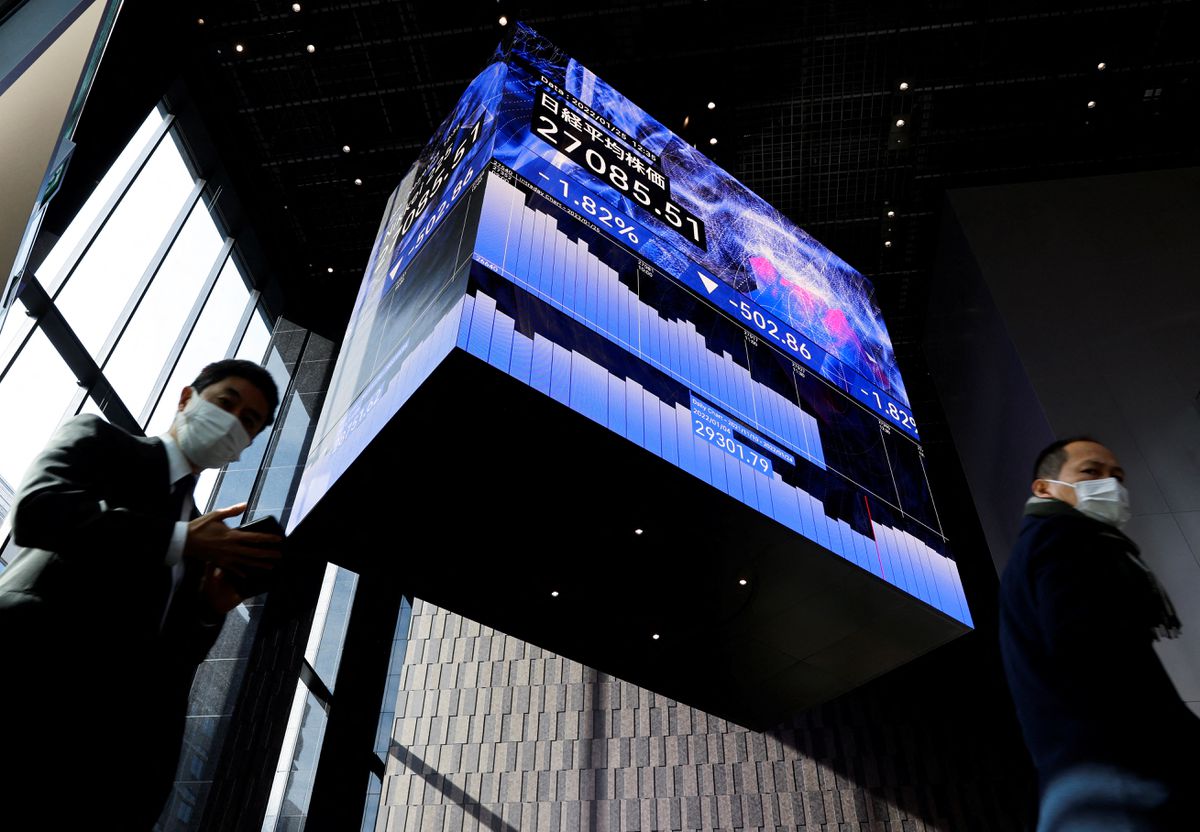
Asian stocks recovered some of their steep losses from the previous session on Friday after U.S. markets limited further declines from hawkish U.S. Fed comments, supported by a firm economy and strong earnings at Apple Inc (AAPL.O).
U.S. stock futures rose in Asia with Nasdaq 100 e-minis up 1.2% and S&P 500 e-minis up 0.8% after Apple on Thursday reported record sales in the holiday quarter, beating estimates. Apple shares rose over 5% in after-hours trading.
MSCI’s broadest index of Asia-Pacific shares outside Japan (.MIAPJ0000PUS) was up 0.2% after sliding 2.26% on Thursday. The index is still down 5.1% so far this month.
Australian shares (.AXJO) were up 1.16%, while Japan’s Nikkei stock index (.N225) rose 1.49%.
Elsewhere in Asia, China equities rose on Friday with China’s blue-chip CSI300 index (.CSI300) 0.24% higher. Hong Kong’s Hang Seng index (.HIS) was down 0.41%.
On Wall Street, U.S. stocks retreated after a solid opening, as investors juggled positive economic news with mixed corporate earnings, geopolitical unrest and the prospect of a more hawkish Federal Reserve.
The Dow Jones Industrial Average (.DJI) fell 0.02%, the S&P 500 (.SPX) lost 0.54% and the Nasdaq Composite (.IXIC) dropped 1.4%.
U.S. markets had opened higher after the Commerce Department’s advance take on fourth-quarter GDP showed the U.S. economy in 2021 grew 6.9% at its fastest pace in nearly four decades.
But gains were pared as investors processed how strong economic growth might inform the Fed’s thinking.
Full coverage: REUTERS
Dollar Set For Sparkling Week As Hike Expectations Surge
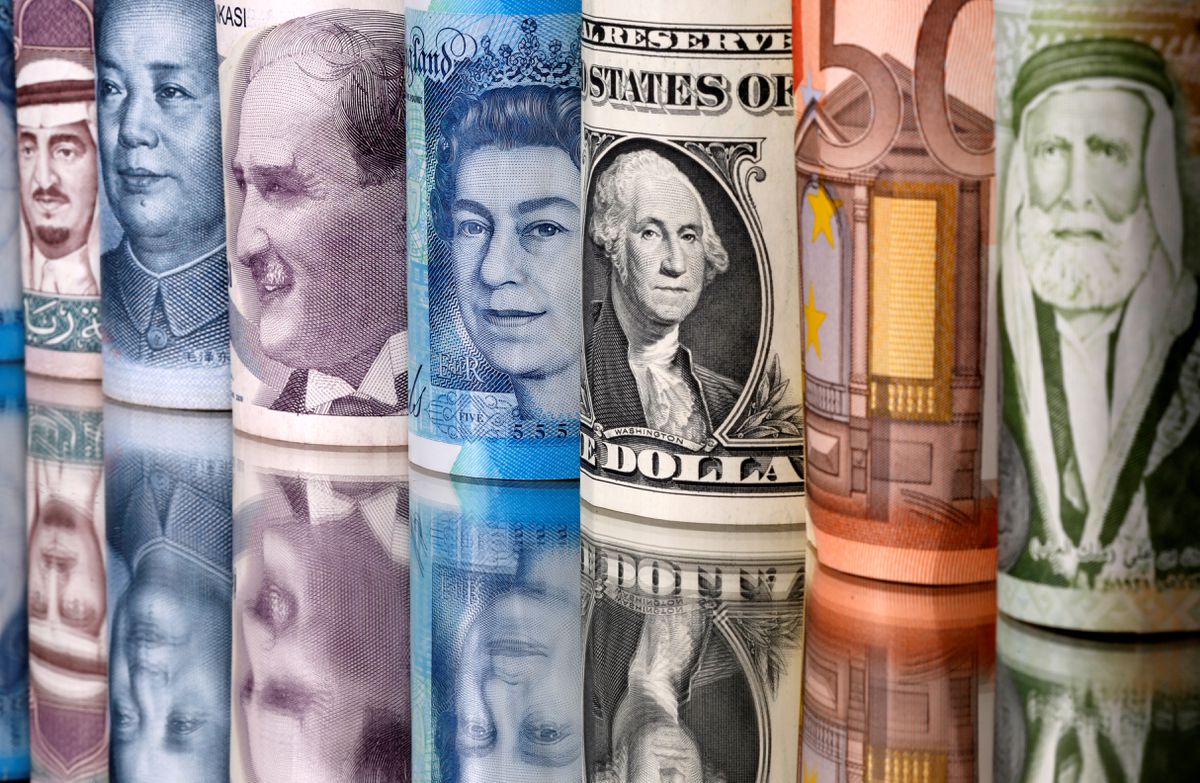
The dollar was headed for its best week in seven months on Friday after breaking through key levels against the euro as traders priced in a year of aggressive U.S. interest rate hikes.
Federal Reserve chair Jerome Powell unleashed bets on five or more hikes this year after he left the door open on Wednesday to raising rates faster than in previous cycles.
Data showing the best annual U.S. growth in nearly four decades didn’t hurt either.
Overnight the euro fell almost 0.9% to a 20-month low of $1.1131, the yen fell 0.6% and the Australian and New Zealand dollars dropped more than 1%.
For the week so far, the dollar has gained 1.7% on the euro, 2% or more on the Antipodeans and the U.S. dollar index has shot above 97 for the first time since July 2020. It last stood at 97.250.
“So much for all those analysts rushing to conclude that the dollar rally was done, following the early-year divergence between (rising) U.S. interest rates and the (falling) dollar,” said National Australia Bank’s head of FX strategy, Ray Attrill.
The greenback also leapt against the yuan on Thursday – its best session in seven months – as softening industrial profit growth in China bolstered the case for monetary easing there.
Fed funds futures have moved to price in as many as five U.S. hikes this year with some analysts forecasting six.
Full coverage: REUTERS
Oil Rises, Headed For Sixth Weekly Gain, Amid Supply Concerns
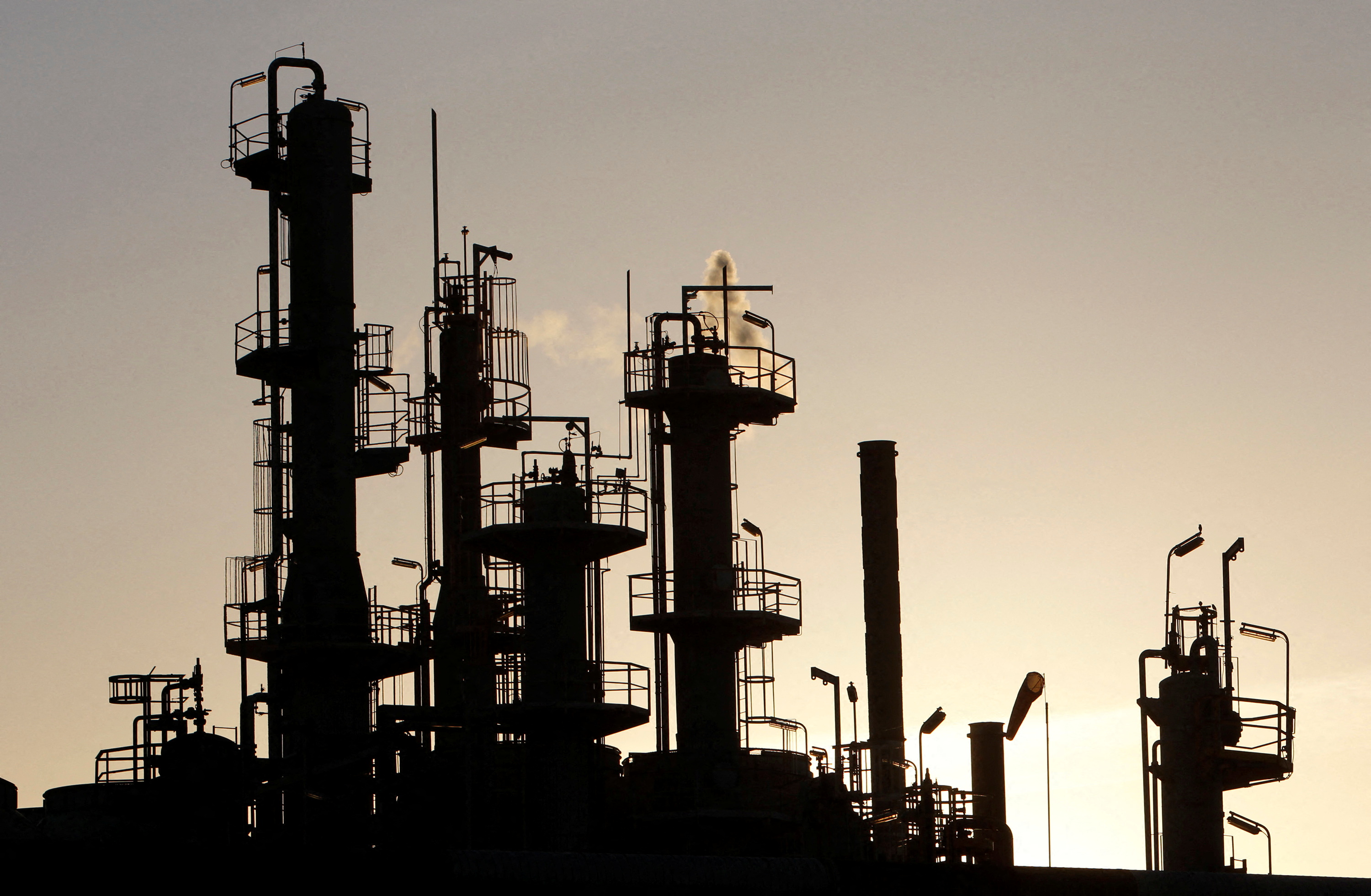
Oil prices rose on Friday, set for their sixth weekly gain, amid concerns of tight supplies as major producers continue their policy of limited output increases amid rising fuel demand.
Brent crude futures climbed 49 cents, or 0.6%, to $89.83 a barrel at 0310 GMT, after falling 62 cents during the previous day. However, prices did reach $91.04 earlier in that session, the highest since October 2014.
U.S. West Texas Intermediate (WTI) crude futures rose 62 cents, or 0.7%, to $87.23 a barrel, having declined 74 cents on Thursday. WTI also reached a seven-year high of $88.54 earlier in the session.
Both Brent and WTI are set to rise for a sixth week, the longest weekly streak since October, when Brent prices climbed for seven weeks while WTI gained for nine.
This year, prices have gained about 15% amid geopolitical tensions between Russia, the world’s second-largest oil producer and a key natural gas provider to Europe, and the West over Ukraine as well as threats to the United Arab Emirates from Yemen’s Houthi movement that have raised concerns about energy supply.
“Where Brent crosses $90 level, we see some selling from a sense of accomplishment, but investors start buying again when the prices fall a little as they remain cautious about possible supply disruptions due to rising geopolitical tensions,” said Tatsufumi Okoshi, senior economist at Nomura Securities.
“The market expects supply will stay tight as the OPEC+ is seen to keep the existing policy of gradual increase in production,” he said
The market is focusing on a Feb. 2 meeting of the Organization of the Petroleum Exporting Countries (OPEC) and allies led by Russia, a group known as OPEC+.
OPEC+ is likely to stick with a planned rise in its oil output target for March, several sources in the group told Reuters.
Full coverage: REUTERS


 Home
Home